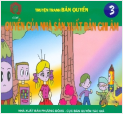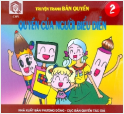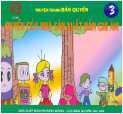
Museums and Copyright
.jpg)
PHOTO: VICTOR R.RUIZ
In the digital age, the cultural heritage community is increasingly faced with the responsibility of managing its own Intellectual Property (IP) internally, as well as managing uses by third parties and users throughout the world, often on diminishing budgets. Effective use of the IP system allows museums to meet international standards of best practice, and can offer significant opportunities to leverage their goodwill, authenticity, uniqueness and scholarly expertise to generate a return on investment. WIPO has monitored closely the evolution of IP issues related to museums and Cultural Heritage Institutions (CHI); and in 2007 a WIPO Guide on Managing Intellectual Property for Museums was prepared by Mrs. Rina Pantalony, Coordinator, Intellectual Property Projects in the Department of Cinema Studies at the Tisch School of the Arts, New York University. The objective of the publication was to raise the awareness of member states and institutions directly involved in the preservation, development and dissemination of our cultural heritage. The Guide introduces IP concepts and management practices of CHIs, so that they are able to better understand the full potential of their collections (both from educational and sustainability perspectives), and to increase the overall quality of preserving their cultural heritage assets. The Guide is comprised of two parts. In its first part, it describes IP issues relevant to museums and CHIs, such as rights in scholarly content, technologies developed in-house and branding tools. The second part reviews existing business models that could provide museums with appropriate opportunities to create sustainable funding, and deliver on their stated objectives. During recent years, the role that IP plays in providing access to Cultural Heritage Institutions’ (CHI) collections, and in preserving and managing valuable works they contain has been increasingly recognized. The underlying issues have rapidly evolved and this has also influenced the discussions among member states in the context of the Committee on Development and Intellectual Property (CDIP) and the Standing Committee on Copyright and Related Rights (SCCR). Due to those latest developments in the international debate, WIPO decided to update the Guide not only for the purpose of the work done within the Organization, but also for the interests of member states and relevant stakeholders. The new WIPO Guide on Managing Intellectual Property for Museums (2013 Edition) was released during the 23rd General Conference of the International Council of Museums (ICOM) in Rio de Janeiro on August 13 in the presence of the author.
WIPO



 VN
VN






 Consultation workshop on the Draft Decree on administrative sanctions on copyright and related rights
Consultation workshop on the Draft Decree on administrative sanctions on copyright and related rights





